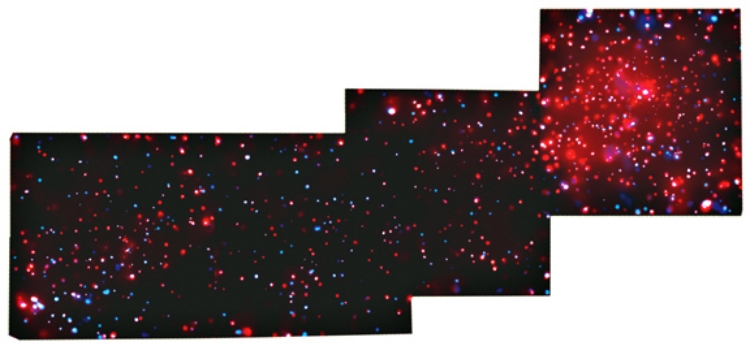
 Credit: NASA/Penn State/L. Townsley et al.
Credit: NASA/Penn State/L. Townsley et al.
A Bouquet of Stars
Young stars are shy. They are often swaddled inside the thick clouds of gas
and dust out of which they form. Studying these very young stars, while
difficult, is important to understand the process of star formation.
Fortunately X-ray astronomy provides an important tool for the astronomer
studying young stars. This is because young stars are often strong X-ray
sources, and these X-rays can penetrate the cocoons of gas and dust and
give astronomers a view of these shy stars. The X-ray image above shows
baby stars near the Rosette Nebula
obtained by the Chandra X-ray
Observatory. In this image the colors represent the energy of the
emitted X-rays - red stars are dominated by low-energy X-ray emission and
blue stars by high energy emission (with very little low energy emission).
Astronomers believe the blue stars are deeply embedded in the Rosette
cloud, while the red stars are outside this cloud. But the stars on the
right side of the image are show offs - these stars are massive, with
strong stellar winds, and they've blown away their stellar gas and dust
cocoons.
Last Week *
HEA Dictionary * Archive
* Search HEAPOW
* Education
Each week the HEASARC
brings you new, exciting and beautiful images from X-ray and Gamma ray
astronomy. Check back each week and be sure to check out the HEAPOW archive!
Page Author: Dr. Michael F.
Corcoran
Last modified October 22, 2001


